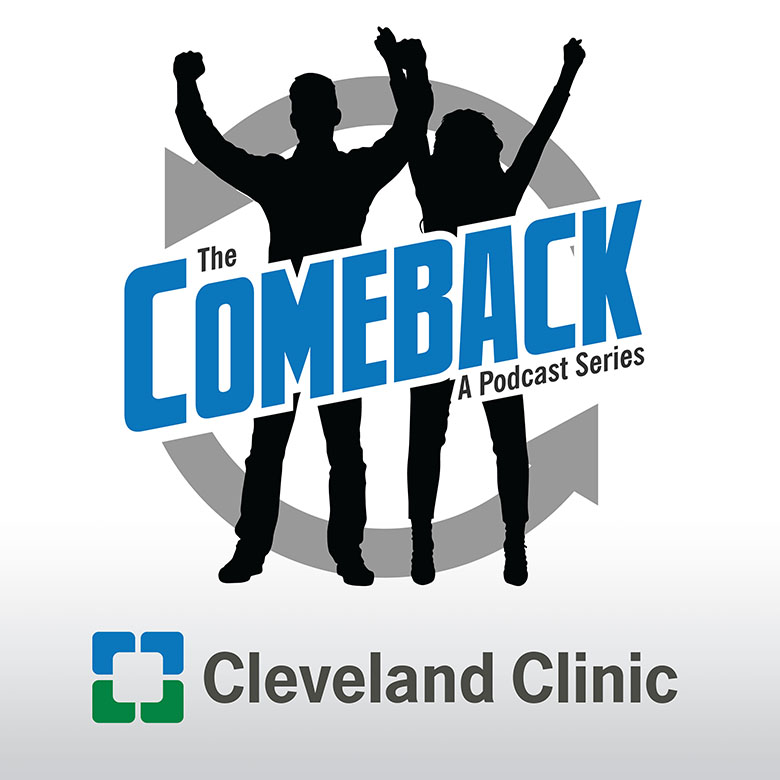Is Return to Play Possible After a Cardiac Event?

Life after a cardiac event can be difficult to adjust to, especially if you are an athlete. The decision to return to play is important and must be made by weighing the risks and benefits. Dr. Michael Emery, Co-Director of the Sports Cardiology Center, talks about returning to play, what your doctor thinks about, and the shared decision-making process.
Learn more about the Sports Cardiology Center at Cleveland Clinic:
Subscribe: Apple Podcasts | Podcast Addict | Buzzsprout | Spotify
Is Return to Play Possible After a Cardiac Event?
Podcast Transcript
Announcer:
Welcome to Love Your Heart, brought to you by Cleveland Clinic's Sydell and Arnold Miller Family Heart, Vascular, and Thoracic Institute. These podcasts will help you learn more about your heart, thoracic and vascular systems, ways to stay healthy, and information about diseases and treatment options. Enjoy.
Michael Emery:
I'm going to talk about the risk of participation. A lot of us remember Christian Eriksen's collapse from sudden cardiac arrest on the pitch during Euro 2020 when he was playing for his native country of Denmark. This was live on international television. I know my phone went off as soon as this happened by many of my colleagues texting me about this. Thankfully, he survived. This has been highlighted. Emergency action plans saved his life, rapid defibrillation and rapid action.
This is a great case of survival. Mr. Eriksen was screened multiple times before his event. Now, just 259 days afterwards, he's talking about returning to the pitch, and his goal of playing in the World Cup for his native Denmark. After this story, he scored his first goal, again, playing sports after sudden cardiac arrest with a defibrillator.
This brings us to the risk of sudden cardiac death during activity, and this paper from 2020 really highlights that any activity increases your risk of sudden cardiac arrest, sudden cardiac death while you're participating in that activity. The more habitual your activity is, the less your risk goes up during that. In fact, the more habitual your activity your risk of sudden cardiac death during the other 23 hours of the day that you're not doing anything is much lower. So being that weekend warrior who never does anything and trying to go hit it hard all of a sudden increases your risk dramatically more than if you're habituated to vigorous activity. Think of that sedentary person who decides to shovel snow in the winter. This is one of the reasons why, amongst a few others.
Once you've been diagnosed with a cardiac condition, what about returning to play? Return to play guidelines, and these were published in 2005. Well, these were updated in 2015 for the ACC and the American Heart Association. The overlying goal of return to play guidelines are the protection of athletes' health and avoidance of undue risk are the primary factors informing clinical judgment and recommendations of the managing physician. This is helpful when we're trying to decide how to counsel a patient or what we would recommend to a patient or a school for someone that has a diagnosed cardiac condition. This starts to bring us into the shared decision-making process.
The 2015 updated guidelines, the ACC and the AHA had introduced the level of evidence and the classification. It wasn't just about yes or no; it was about how strong the recommendations are and how strong the data behind it is. This rings about more nuance. No longer is it thumbs up, thumbs down, yes or no, binary. We have, it is reasonable and may be considered. That inherently introduces a scenario where there's discussion involved. This was highlighted by this great letter to the editor by some colleagues in 2017 about a call for a paradigm shift in clinical decision making in athletes.
What they specifically state, the time has come to acknowledge with full transparency that sport participation among athletes with cardiovascular disease is a complex clinical topic that remains shrouded in persistent scientific and clinical uncertainty, and a simplified yes versus no decisions are almost always suboptimal, and our young athletes really deserve more.
This brings this into the era of shared decision making and how do we discuss shared decision making from sports cardiology pillars. This is important and we're going to spend some more time on this. There are five pillars that really decide and help us understand shared decision making. One is knowledge. What's the appropriate diagnosis? Has the appropriate diagnosis been made? Are you an expert in that condition? If you are an expert in sports and recommendations? Do you have the knowledge to make this decision, knowledge to share it and the risks with that person? Are you the right person? Humility, recognizing that you may not be able to provide that expert counsel. You may not be an expert in that disease even though you may be an expert in sports cardiology, and you have to bring in other experts to help you and assist you. Bring in other opinions, recognizing that science can change. We've seen those winds of change. I appreciate that the physician is there to serve the patient, not to parent the patient per se.
Respect. Respect the patient's priorities and recognize the patient's voice and opinion. Teamwork. Approach the patient as a teammate and a fellow expert. Engage and discuss with the patient's significant others. There is other third parties often involved in this. Communicate. Communicate with the patient, with the parents, with the school.
All these five pillars, knowledge, humility, respect, teamwork, communication, have to factor into a shared decision-making approach. It's not a rubber stamp. That's not what shared decision making is about. It's not rubber stamping, you can play. It involves an athlete with disease, it involves a physician, it involves a third party oftentimes. Third parties aren't necessarily involved in the discussion upfront, but they have to be involved in the implementation of any shared decision-making approach.
Some potential pitfalls. Differences in valuations of an athletic lifestyle between a physician and an athlete. That's an important piece. Often athletes with cardiovascular disease seek out sports cardiologists because of that valuation effort. Biases, clouding communication, and appreciation of risk. That implicit bias. Differences in perception and interpretation of risks. I may not interpret the risk the same way someone else. And medical legal biases. This leads us to athlete centered decision making regarding sports eligibility and participation.
A few take home points here. One, sports per se are not a cause of enhanced mortality, but it can trigger sudden death in a susceptible athlete. Guidelines for participation in sports with cardiovascular disease serve as a framework to discuss return to play and risk is not a mandate. Shared decision-making shifts away from the binary process of sports disqualification involving equal participation from the athlete and other key stakeholders. Thank you.
Announcer:
Thank you for listening. We hope you enjoyed the podcast. We welcome your comments and feedback. Please contact us at heart@ccf.org. Like what you heard? Subscribe wherever you get your podcasts or listen at clevelandclinic.org/loveyourheartpodcast.

Love Your Heart
A Cleveland Clinic podcast to help you learn more about heart and vascular disease and conditions affecting your chest. We explore prevention, diagnostic tests, medical and surgical treatments, new innovations and more.


